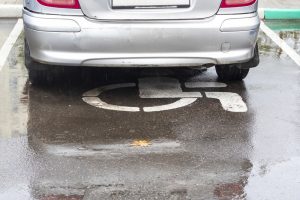Will Cars Ever Be Perfectly Safe?
Cars today are probably safer than they have ever been. Whether you’re a driver, passenger or pedestrian, advances in technology and construction materials have made driving at speed in a large metal box safer, but they’re not perfect and may never be. For those with disabilities, they may not go far enough.
There are a number of products on the market that do their best to make driving as safe as possible. Some of them are aimed squarely at those for whom driving already has enough challenges. Driving aids are designed to help people with disabilities or those with chronic health problems to still enjoy motoring whilst keeping it safe for them and other road users.
Whilst technology has made the inner and outer shell of a car safer, there are some adaptations that can be further added to a car that allows disabled drivers to maintain their love of motoring and independence. The question then becomes, are they safe? Let’s take a look.
Obviously, people are different. We all have different strengths and weaknesses which includes our level of physical ability. When it comes to disability, then it applies even more so. When it comes to choosing a driving aid, you have to look at the disability and select the device accordingly. There isn’t a one-size-fits-all solution. You need to look at what the specific disability is, what area of the body is affected, the person’s strength, range of movement and what aspect of driving they are going to need help with. For example, if the issue is a lack of grip strength, then you need to look at control aids that don’t require strength (i.e. steering wheel or gear-stick).

Benefits of Driving Aids
Driving aids are designed to help with the art of driving and to ensure the car remains easily operable when used by someone with disabilities, without impairing them further. With the advances in technology, there is almost no aspect of the car that can’t be modified with some sort of driving aid, whether that’s to work with steering, braking or the basic operation of the vehicle.
The number of disabled drivers or modified cars is very small. In the UK, there are around 390,000 people with either disability registered or have other medical causes. Another 385,000 have a restricted licence. This only amounts to 1.2% of all drivers in both cases. Whilst there are no records that determine how many accidents involve disabled drivers, in the UK at least, experts have noted that disabled drivers have fewer accidents than able-bodied drivers. In addition, no accidents have been recorded in the UK, or across Europe, that have specified a driver safety aid has been at fault for a road traffic accident.
DVLA
Are driving aids safer? At the end of the day, no matter how many driving aids you have, it’s your level of skill at driving, not aids, that’s going to determine how safe the roads are. If you have a disability that may affect your driving then you are required to tell the DVLA. You are also required to tell them again if your disability has deteriorated.
We all want to keep everyone using the road network safe and that needs us all to drive safely, regardless of our physical ability. As we move into an era of self-driving cars and autonomous vehicles, we might all soon be living in a world where driving aids are standard for everyone.
If you would like further information on driving aids then please get in contact with us on 01525 850588. Alternatively, you can contact us via our contact form.
Recently had my fourth vehicle adapted by Paul At Pb Conversions.always does a first class job and with first class service & always easy to deal with. Thanks for the great service Paul from you and your crew over the years.
Kiran was very helpful today explaining some of the issues I had with my hoist, and how to avoid them from happening again.
Dealt with the adaptations for my son's new motability vehicle - very friendly, efficient and helpful. Really pleased.
Very helpful and knowledgeable engineer, fast and efficient service
Thank you so much for all your advice, help and very professional job on adapting our car. Without your advice I would never have known to apply for a grant. You were excellent, thank again.
Due to my husband's condition we need a car with adaptions, we were advised by his paraplegic group to visit and this place is the best. Felt so relaxed talking about what we needed, all the staff were so friendly and so well informed, going above and beyond, especially Paul Berridge. I fully recommend this business. Honest and reliable. Thank you.
Staff are super super friendly, helpful, extremely informative and really nothing Paul & Co can’t do to any vehicle. PERFECTION is their middle name! Thank you so much for your outstanding service to me over the years and I look forward to using your company all my driving life.
Excellent work done on our car and very professional company. Great customer service and prompt response to emails.
Would you like an assessment?
If you are a disabled driver, or know a disabled driver in Bedfordshire, Hertfordshire, Buckinghamshire or Northamptonshire, please contact PB Conversions for a free no obligation quote to assess what products would benefit you.
